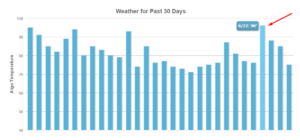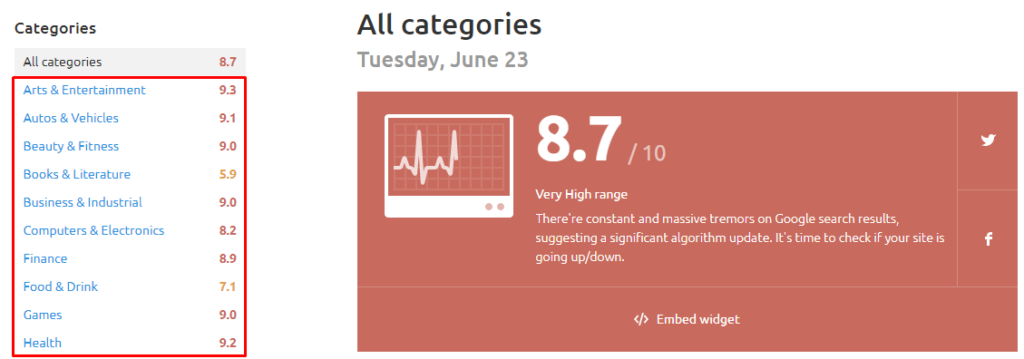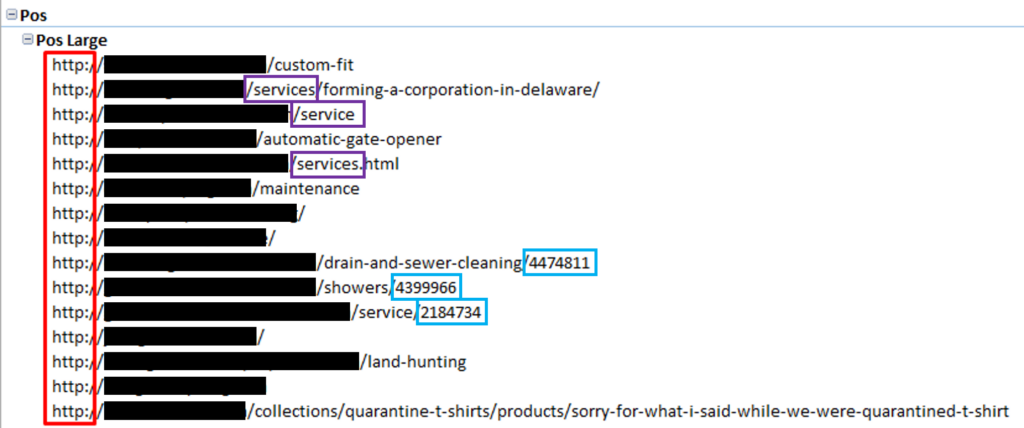What Does a Google Algorithm Update Mean?

Over the years we have covered dozens of search algorithms updates. These updates have ranged from minor shifts to dramatic changes that alter the way we search. The TYPE of algorithm changes have also varied over the years. There are updates that supplement or enhance the algorithm, and key changes to the core algorithm. It’s great to dive into each individual update to understand a recent change. However, there is so much more to understand and consider in order to weather and overcome future updates.
Below we will cover a range of topics and questions surrounding search algorithm changes. Starting from the top we will cover why it is important to understand algorithm revisions, even if you are not actively involved in the search industry or SEO. These changes significantly impact your experience, it’s important to understand search engines and search. After that we will get exactly what an algorithm is from top to bottom. We will also cover the need for algorithms to evolve and morph as time goes on. Lastly we will go over how you can spot algorithm changes in the search landscape.
Importance of Understanding Search Algorithm Changes
Did you know 81% of people around the world use search engines every single day? Algorithm changes can have a major impact on everyone regardless of profession, age, or goal. Shifting search results can be the difference between learning about a subject and being offered something to buy. It can also make a massive difference on what those who search learn and accept as the correct answer for their query.
You can see the impact search has in our culture and life in everyday tasks. By just going to a different city or location, the results you receive drastically change. Then there’s things like opinion journalism and misleading information often cited as truth showing up in search results as well. Search results can have a massive change on industries, websites supporting those industries, and the very content being created. Roughly two years ago we saw this exemplified with what many dubbed as the ‘medical update’. It impacted everyone, but felt the hardest within sites focussing on medical subjects. We covered this update in depth and covered how intent and credibility were likely the biggest changes introduced in that update. Changes like the ‘medic’ update can change what websites get rewarded and which websites can no longer compete. In the aftermath, we saw many websites change their focus or shut down entirely.
If we keep following the trail of search result changes and those impacted, we eventually run into business and economic impacts. This is where the risk of using and relying on search results and search traffic becomes reality. If your website goes from receiving a ton of traffic and thus generating revenue, you can see that stunt or even vanish when an algorithm change gets released. Massive websites tend to see these fluctuations in percentages. While smaller websites may see these shifts more dramatically with either large increases or drops in organic search traffic.
This impact continues all the way to users. It’s those who search who hold the majority of power when it comes to search result changes through algorithm adjustments. Search engines constantly look to improve search results and in turn gain loyal users. They use metrics like click through rates, query dwell time, and a host of other factors to monitor ‘search satisfaction’. It’s this generalization of a user’s happiness (2) with search results that search engines like Google take and then test new algorithm changes.
It’s because of this influence that you should care about search algorithm changes. If you can learn what an algorithm is, how it can change, and how to spot search resulting changes, you can begin leveraging algorithm changes to benefit your goals, website, and even life in general.
What is a Search Algorithm?
Here is the direct definition of an algorithm.
Al·go·rithm (‘alɡəˌriT͟Həm)
Noun; a process or set of rules to be followed in calculations or other problem-solving operations, especially by a computer. “a basic algorithm for division”
This is a quick visualization of an algorithm specifically ‘Euclid’s algorithm’ for calculating the greatest common divisor (g.c.d.) of two numbers a and b in locations named A and B.

The algorithm proceeds by successive subtractions in two loops: IF the test B ≥ A yields “yes” (or true) (more accurately the number b in location B is greater than or equal to the number a in location A) THEN, the algorithm specifies B ← B − A (meaning the number b − a replaces the old b). Similarly, IF A > B, THEN A ← A − B. The process terminates when (the contents of) B is 0, yielding the g.c.d. in A.
That’s A LOT of information. But it demonstrates that algorithms are technical. It’s much more than 2+2=4. Below is a quick algorithm just to show a simple example of how an algorithm works. As well as how a basic algorithm changes or updates occur. We will start with our base algorithm called the ‘Cool Colton Algorithm’.
Cool Colton Algorithm
c = (bc(d+f))/k + (m[y=2,n=1])x
The key for our variables in our algorithm above are as follows.
bc = base cool
d = dogs
f = friends
k = kids
m = marriage
x = extra points
Now if we start to apply the numbers behind our variables.
bc = 33
d = 3
g = 6
k = 3
m = Y (or 2)
x = 5
c = (bc(d+f))/k + (m[y=2,n=1])x
Add ‘base cool’ value. c = (33(d+f))/k + (m[y=2,n=1])x
Add ‘number of dogs’ value. c = (33(3+f))/k + (m[y=2,n=1])x
Add ‘number of friends’ value. c = (33(3+6))/k + (m[y=2,n=1])x
Add ‘number of kids’ value. c = (33(3+6))/3 + (m[y=2,n=1])x
Confirm ‘married status’ option. c = (33(3+6))/3 + (2)x
Add ‘extra points’ value. c = (33(3+6))/3 + (2)5
Then we can begin resolving the algorithm in order.
c = (33(3+6))/3 + (2)5
c = (33(9))/3 + (2)5
c = 297/3 + (2)5
c = 99 + (2)5
c = 99 + 10
c = 119
Last we have to apply our scale in order to determine what percentage of ‘cool’ I am according to my algorithm. Which in this case we will say our scale is 1000. Which means my total percentage of ‘cool’ would be about 12%.
Now considering I don’t feel very cool after seeing my score, I’m going to see if I can tweak or modify anything in my algorithm to help me achieve a better score.
Let’s change the value for being married and give that a bit more weight (from 2 to 99).
c = (bc(d+f))/k + (m[y=99,n=1])x
This change would be a clean example of an algorithm update. Sometimes it is a massive change (algorithm rework). Most of the time, it’s just slight tweaks to an existing algorithm.
Now if we re-run our algorithm we can see the difference a slight tweak can make.
c = (33(3+6))/3 + (99)5
c = (33(9))/3 + (99)5
c = 297/3 + (99)5
c = 99 + (99)5
c = 99 + 495
c = 594
Which would come out to be a ‘cool’ percentage of about 59% which looks better to me.
When you dive into the types of updates, you need to understand two main concepts. You must first seek to understand what changed at the algorithmic level. Secondly, you must determine if the change introduced any new values or if old ones changed.
The first concept of determining if anything changed at an algorithmic level. Is not always easy to spot especially when it is unknown, which is the case for search algorithms. However Google is usually pretty good about telling us what happened. Which means we really have two main categories where algorithmic changes occur.
- Supplemental – Additional logic being added to an algorithm.
- Core – A change to base algorithm which can be values or equations.
The example of ‘Cool Colton Algorithm’ where I changed the value of being ‘married’ is a clean example of a core algorithm change.
From c = (bc(d+f))/k + (m[y=2,n=1])x
To c = (bc(d+f))/k + (m[y=99,n=1])x
A supplemental algorithm change updates the variables and changes the fixed variable factor. Again if we use the ‘Cool Colton Algorithm’ and the change we made to the ‘married’ value, you see an easy example of a fixed variable’s value changing.
When it comes to Google’s search algorithm specifically we have an added layer of complexity. This additional layer comes in the form of algorithm signals or things we believe to be values and fixed variables. These algorithm signals are largely speculated or simply unknown. Which leads us into the general classification of these search signals and their three categories: confirmed, speculated, and unknown.
Here are some quick examples of each group and what we believe Google uses in its search algorithm.
| Confirmed | Speculated | Unknown |
| Site Speed
Title Tags Anchor Text HTTPS (YMYL) PageRank Mobile Friendly User Intent Geo-Location more… |
Domain Authority
CTR (click through rate) Dwell Time Content Length Links Keyword Density more… |
Site Builder
Domain Age Domain History Content Freshness Javascript Use XML Sitemap Content Types More… |
Now we can dive a bit deeper into core algorithms, why they change, and how we can tell when an algorithm has been altered.
Why do Search Algorithms Change?
Google and other search engines have continually stated that their core goal for search is providing a great user experience.This means they often change their algorithm to provide better results. These changes are often monitored with search result clicks, dwell time, and actions. Today, search engines like Google put the biggest emphasis on that last point: actions.
With various platforms like the Chrome browser, Google my Business, Maps/Navigation, and even Analytics from Google.com, they have direct access to user interactions where they can view certain bits of data. Things like search history, website preferences, travel history, clicked elements (phone numbers, directions, etc.), and much more.
Another big reason Google updates its algorithm is to combat spam or systematic search manipulation. We have seen these updates most notably in the form of the Panda and Penguin algorithm updates. The Panda algorithm tackled thin and duplicate content. While the Penguin algorithm update essentially devalued and flagged link spam and patterns. They can also use core algorithm updates to adjust the importance of various search signals like title tags or external anchor text. These kinds of changes can impact everyone, but can drastically hit those abusing targeted search signals.
One major thing to be aware of is that algorithm changes in search can occur for any reason. Meaning Google often doesn’t release the motives behind search result changes. Let’s cover a few plausible reasons along with real scenarios we have seen within Google search.
There could be a desire to change a searchers behavior. We have seen this with things like voice search and even inferred location association. The first example may help give longer tail keywords and data around natural language, which can be used to help improve things like knowledge graphs or speech to text features.

The second example shows how adding base functionality can alter the way people search. Prior to Google search assuming your location and thus injecting it as part of a query in the background, users specifically searched using keywords and locations. This allowed for very specific search queries, which in turn showed marketers and businesses how users looked for their offering. A direct example of this may have been a search for “emergency plumber seattle wa”. Today, you just need to be in Seattle and searching for “emergency plumber”. This change is great for users and things like Adwords search volumes. However it now adds complexity and unknown factors for businesses and marketers.

Another example could be a drive to increase direct revenue or even promote specific products or search features. Google has done this with their search ads which have progressively become more prominent in search. They have also changed the layout of ad placement in search results. Some ads also look deceptively similar to organic search results.
We have to keep in mind there are algorithms and processes running behind the scenes to ensure placements, analytics, and clicks to some degree. These changes in searcher behaviors can shift dwell times, clicks, and user behavior in general. That means a direct impact on data collected and algorithm changes to some degree.

One factor that can change search algorithms can be our culture and societal needs. With the COVID-19 pandemic we saw a major algorithm change in May that seemed to set hard favorability to government and credible sources. This is definitely a good thing to have but there can be other impacts with things like elections and movements where certain sources can be ignored or shown frequently in search results. However, that same capability can help create awareness and growth, or stunt visibility and utterly destroy any chance at growing.

Something that seems to always be overlooked when it comes to algorithm changes is Google’s introduction of artificial intelligence, dubbed RankBrain by Googlers. This effectively adds a black-box to some search results. RankBrain is believed to be one of the major components behind search updates like the “Fred” or “Medic” algorithm updates which saw a priority and shift towards better intent matching and credibility factors.
Just to reiterate, search algorithm updates can occur for any reason. Sometimes Google provides some insight into why changes occur. But sometimes, its radio silence and we can only speculate with intuition and anecdotal evidence to support theoretic shifts in algorithms. We’ll dive into this in the next section.
How to Spot a Change to Search Algorithms
Knowing when algorithm changes occur can be a tricky thing. It can also have varying impacts that may appear negative at first but actually prove beneficial once you dig in deeper. Spotting search result changes and understanding what may have changed and why the change occurred is vitally important to weather, adapt, and even leverage algorithm updates in your favor.
Before diving into the meat of the topic we need to keep several key facts in mind. First, Google releases hundreds of updates to their algorithm every year. In theory this means they release multiple updates each day. Some of these updates can be tests for theories or assumed improvements to search. The tests can be isolated to a certain area, some appear for some users and not others, and some of these updates don’t last forever. You also need to keep in mind that algorithms take time to release (2). This means a release can take a few weeks to fully roll out. In that case, initial findings and trends may not prove accurate. Now with the basics of Google algorithm changes in mind we can dive into the two main ways you can see algorithm updates.
The first and most obvious way to spot an update comes directly from Google. This kind of update usually comes in the form of blog posts direct from Google or announcements from Googlers like @searchliaison. These announcements typically get covered in search news and industry forums. They also typically receive some sort of name either provided by Google or named by search professionals. These are the updates that are typically thought of when discussing search algorithm updates. However, this is where our first fact comes into play. We usually only see a handful of these updates announced per year which leaves hundreds of updates in the dark.
This dives right into the second primary way we can see algorithm shifts: rank monitoring and movement. We often dub these as algorithm watch tools or widgets. Just to give a few common ones. There is Moz’s algorithm forecast or “MozCast” monitors ranking changes and gives it a general score recorded like a temperature. SEMRush offers another tool in the form of their “SEMRush Sensor” which also monitors rank fluctuations and applies a score. Advanced Web Ranking has another common one in their algorithm monitoring tool. These tools are great for seeing general sways in search results. It is important to view a few of these when trying to spot unannounced algorithm shifts.
Once we spot an algorithm update we begin viewing those impacted and discover what consistencies they have. This is how we learn and understand what actually changed with algorithm updates. We must state that these findings obviously have some level of speculation. Since Google doesn’t directly say what they changed, we simply need to match what changed on similar websites that saw both positive and negative impacts.
Let’s dive into an example of how this effectively works from start to finish.
1. Determine if Google released a meaningful algorithm
Referring back to the earlier points of how we can spot an algorithm update. We effectively have two options for doing this. We can see if anything has been stated by Google themselves. Otherwise we can look at common rank monitoring tools (or algorithm detectors) to see if they show any significant movement.

SEMRush Sensor, 6/24/2020 Spike

MozCast, 6/24/2020 Spike

Advanced Web Ranking, 6/24/2020 Spike
Now that we can see a fairly consistent trend with ranking fluctuations en masse. We can begin on the next step in spotting and understanding Google search algorithm updates.
2. Grouping websites based on impact after an update.
Now that we have a rough date for an unnamed algorithm update, which in this case happened between June 22-24th of 2020. We can begin reviewing websites and rankings we track. This will help us start to bucket those impacted positively (or winners) and those who didn’t see favorable results (or losers).
Below you can see a visual example of what we watch for.

Some tools like SEMRush Sensor also have some categorization in the form of verticals. They also do some aggregate reporting around what verticals saw a positive or negative impact.

Once we have a group of websites bucketed into winners and losers, we can begin comparing sites, content, elements, and more. This leads into our third step of spotting trends or consistencies across these win/lose groups.
3. Match and theorize potential reasons for impact.
Now that we have sites grouped together we can begin spotting similarities and differences. I like to think of this portion as the search version of I-Spy. Where we look for trends across high-level things like TLDs, industries, domain age, etc. Comparing sites will naturally start shifting towards very specific and even small details within sites. This includes things like content types (entertainment, educational, sales, etc.), internal navigation, site behavior (site speed, mobile friendliness, etc.), backlinks, and beyond.

So for our small group who saw favorable results, we can form a few theories.
- The update favored unsecure websites.
- The update helped improve service-type pages.
- The update improved the presence of pages using numbers.
Once we have a theory or two as to what was altered we can begin validating the next step.
4. Compare theorized trends and reason for impact.
This validation is often done with other experts, data sets, and even additional information from Google and Googlers directly.

This portion is essentially how we begin to solidify what any given update may have changed algorithmically. Which then becomes our final step to spotting algorithm updates and determining what changed.
5. Solidify theory and validate with others (experts, data sets, etc.).
Since we used a fairly fresh example we will need to continue monitoring those impacted and wait for additional research and theories to come out. Then we can begin piecing things together to confirm site elements, search signals, industries affected, and more.
Again we must state that knowing exactly what changed algorithmically is highly unlikely. Google will never publish or fully disclose its algorithm. Even when they publish things like ‘core algorithm updates’, they may provide some general information. But Google never fully outlines exactly what they change and to what degree.

